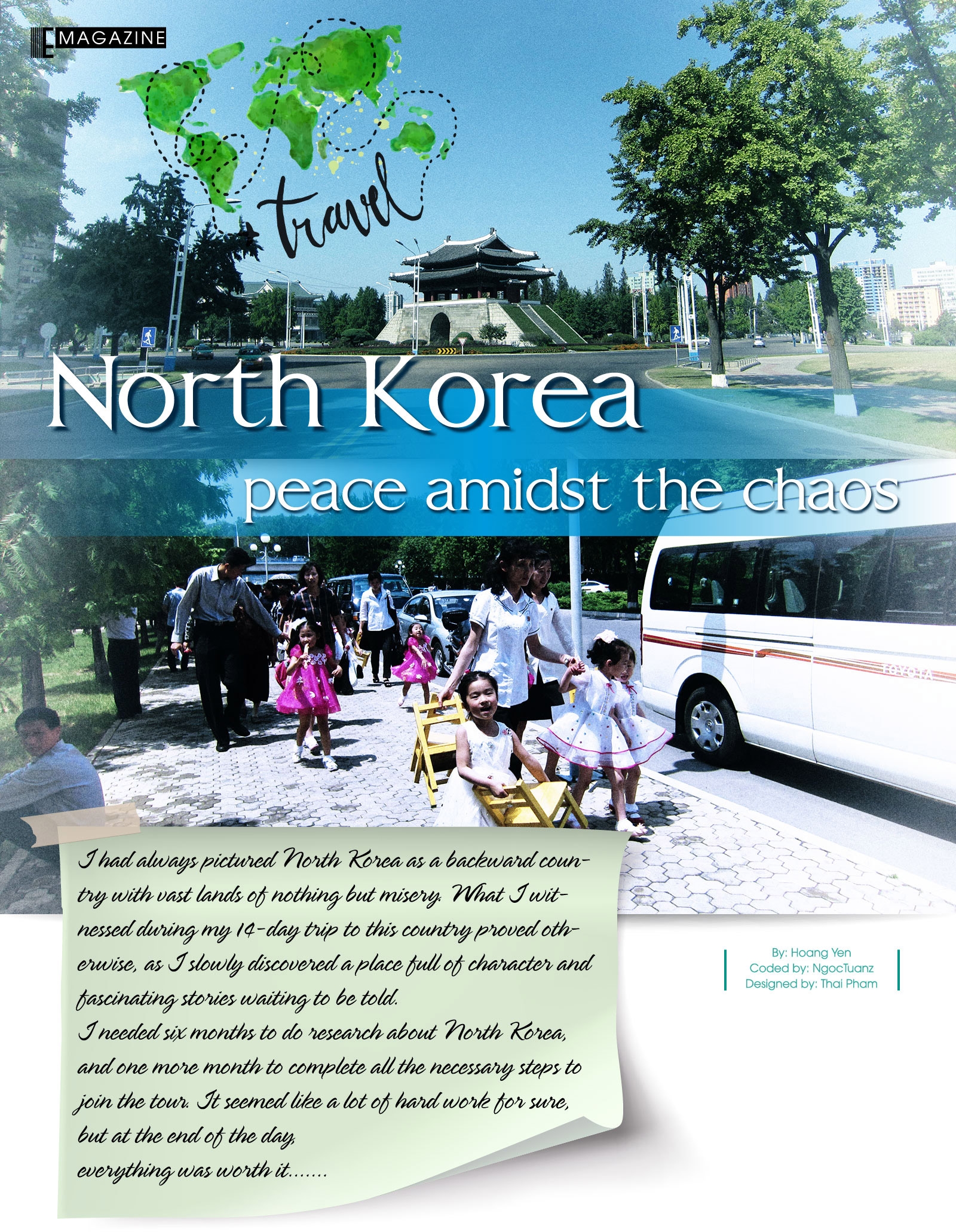 |
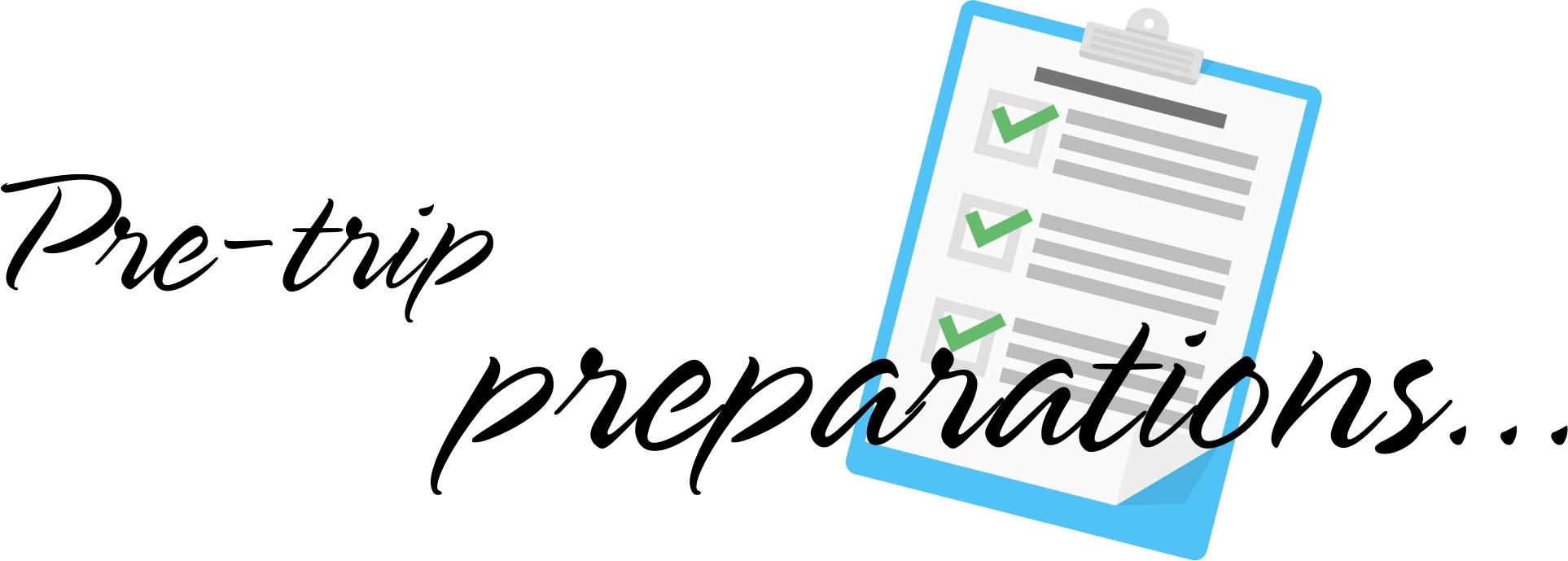 |
| You can only take guided tours to North Korea. Most of the time tourists sign up with a Chinese agency, usually located in Dandong city right across the Chinese-North Korean border. The reclusive country has a quota on the number of foreigners allowed inside, so timing can be dependent on many factors. Foreign tourists are not allowed to use the North Korean won. Instead, you can make transactions in Chinese renminbi, USD, or euro. All spare change will be given to you in foreign currency as well. |
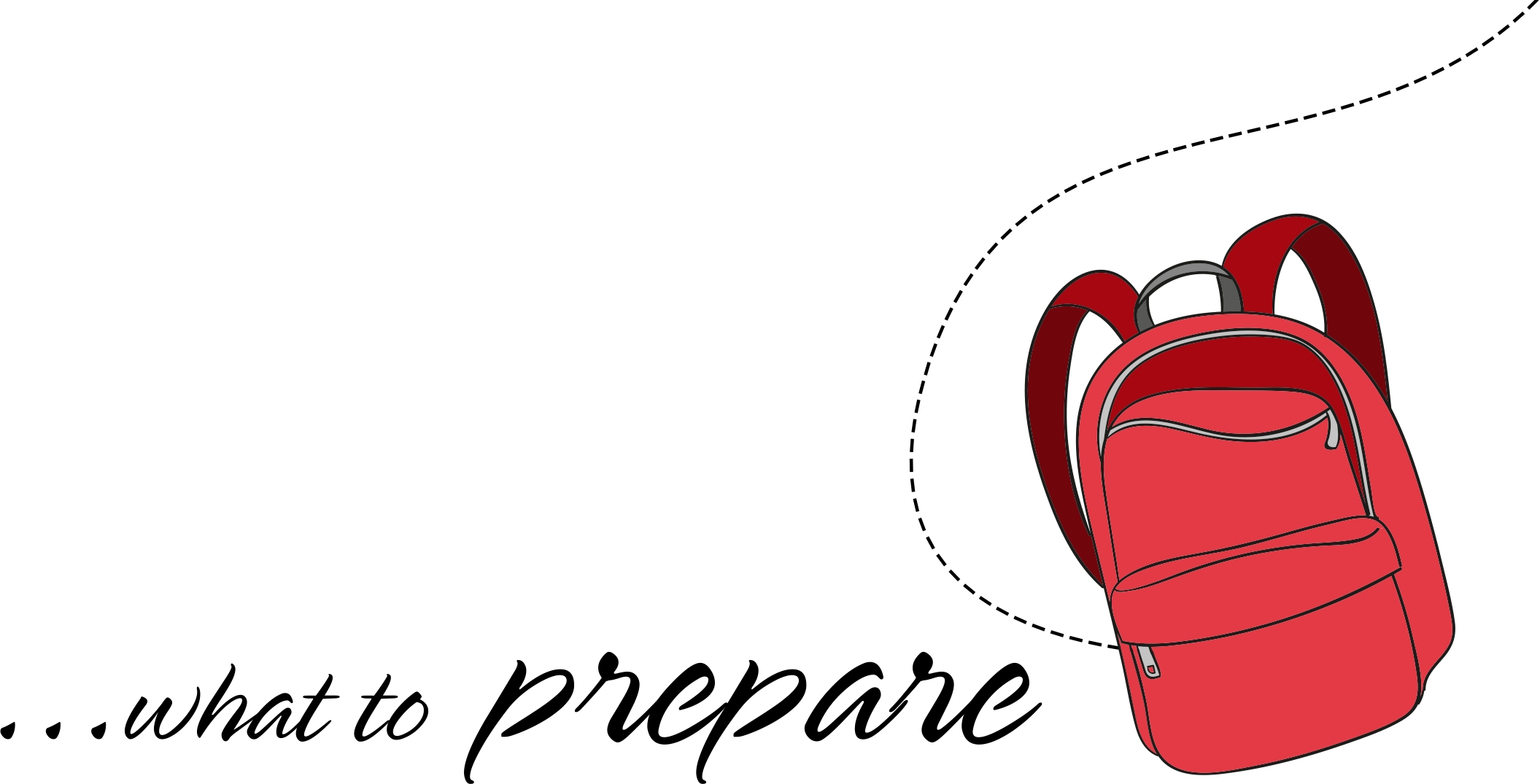 |
| Spare batteries, cameras, memory sticks, mobile phones, and laptops are all allowed in North Korea, but you must ensure that these devices contain nothing illegal according to their laws. Personal hygiene products, such as toothpaste, shampoo, and bath gel are usually provided by the hotels. |
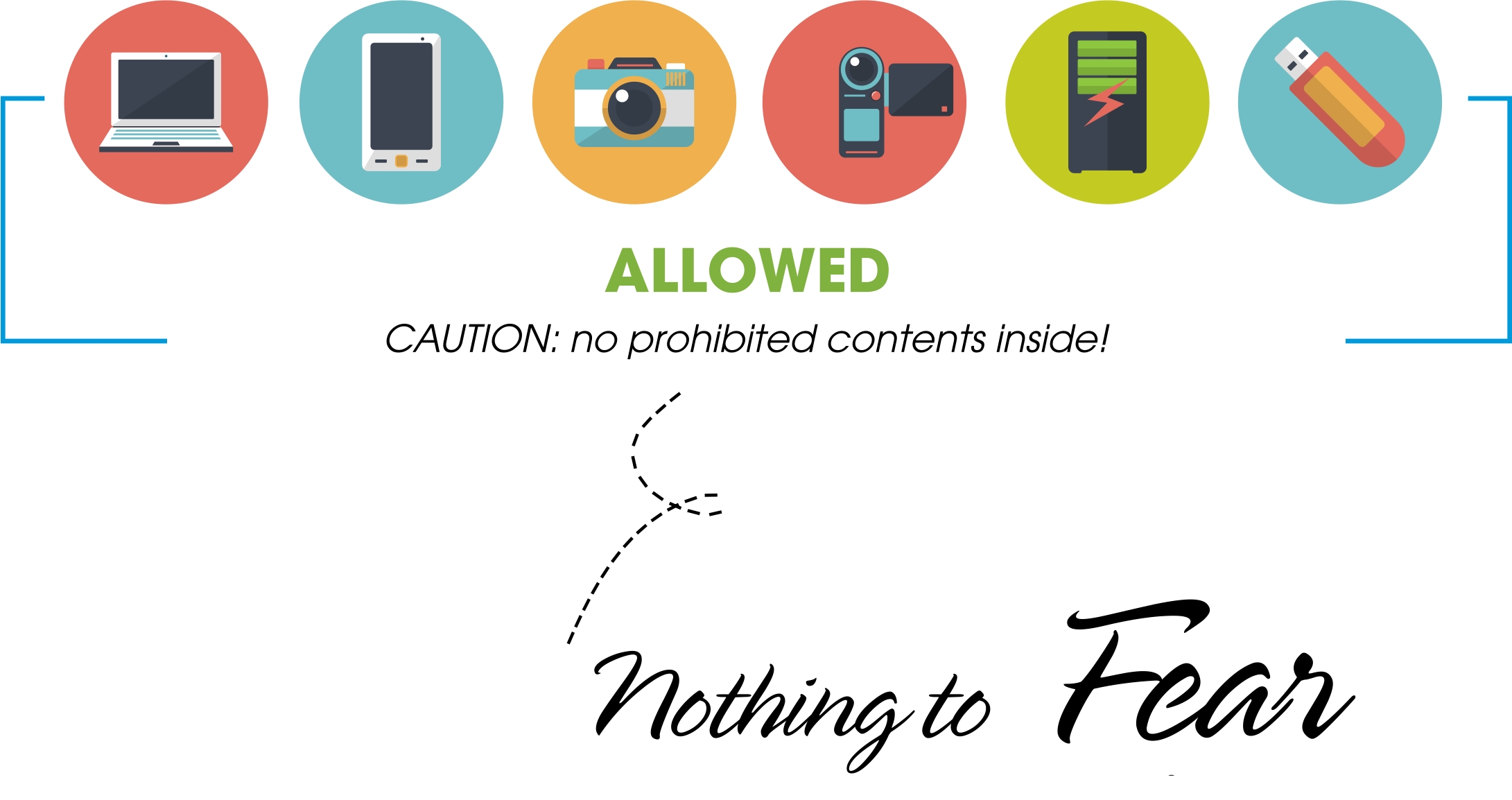 |
|
| Well, it may be hard to understand for some, but I would love to explore a place that is off the beaten path, to immerse myself in an exotic culture that is hauntingly similar yet different from my own. To be honest, I am not that young anymore, especially compared to the adventurous backpackers you often see in the news. Through this trip, I hoped to rekindle that youthful passion that I had for wandering the world. This is not to say that I did not have reservations about the trip. Besides the official schedule provided by the tour agency, I could not find much information about the destinations on the Internet. People who went before me did not write all that many reviews about the country, either. "It's fine, don't worry, I'll be the one to write it then. There's no need to fear," I told myself. |
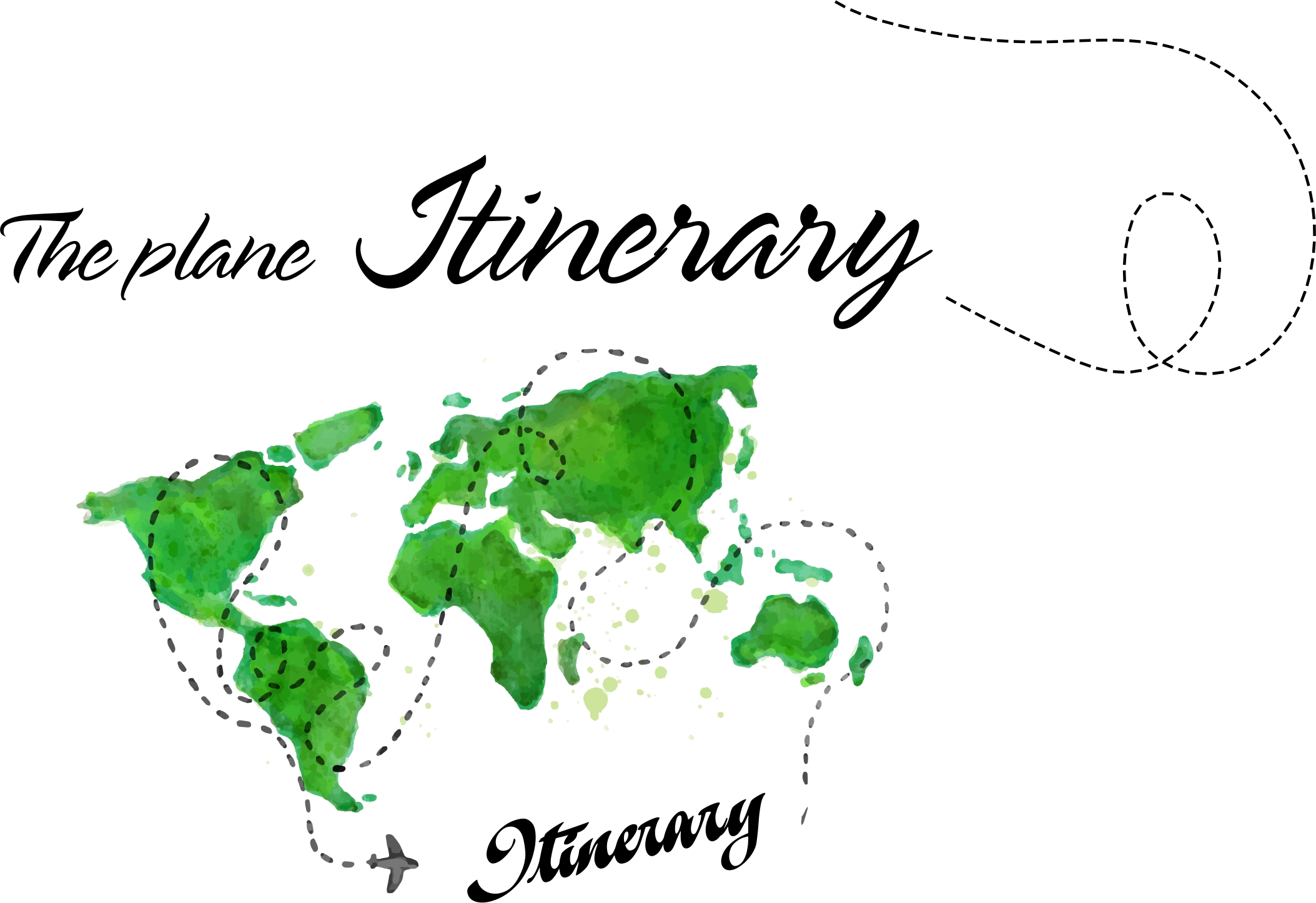 |
| After a three-hour flight from Hanoi to Beijing, we spent a night in the Chinese capital. On the next day, we boarded an Air Koryo flight to Pyongyang, which took us another two hours. Air Koryo is the only airline operating in North Korea. The plane was small but modern, and the cabin crew charmed everyone with their beauty and hospitality. Pyongyang Airport was also tiny, but clean and efficient. The airport security staff was really strict when checking mobile devices, as they do not want outsider propaganda inside North Korea. If you want to connect by 3G or make international calls, you can buy a SIM card at the airport for 80 euros. This SIM does not allow you to connect with the locals, as they use a different network. |
 |
| On Google Earth, Pyongyang is a tiny capital with lots of boring grey concrete. But that could not be further from the city I saw on the trip. Pyongyang was lush with greenery, clean pavements, and major roads with several lanes for different vehicles. Everything was organised to the smallest detail-no skyscrapers were allowed near the river banks, instead the city built gardens, parks, and squares for everyone to enjoy. |
 |
| All of these 50 or 60-storey apartments were built mostly with human power and very little machinery! Every year, Pyongyang finishes a new urban area full of public facilities, such as supermarkets, schools, hospitals, and playgrounds for a convenient life. |
The 180-metre Juche Tower, the symbol of North Korea’s core political beliefs, is the perfect vantage point to have a full view of the Pyongyang skyline. The two elevators can take visitors to the top for 7 euros. From the rooftop, visitors can see the entire cityscape, as well as the massive 105-storey Ryugong Hotel with 3,000 rooms. |
 |
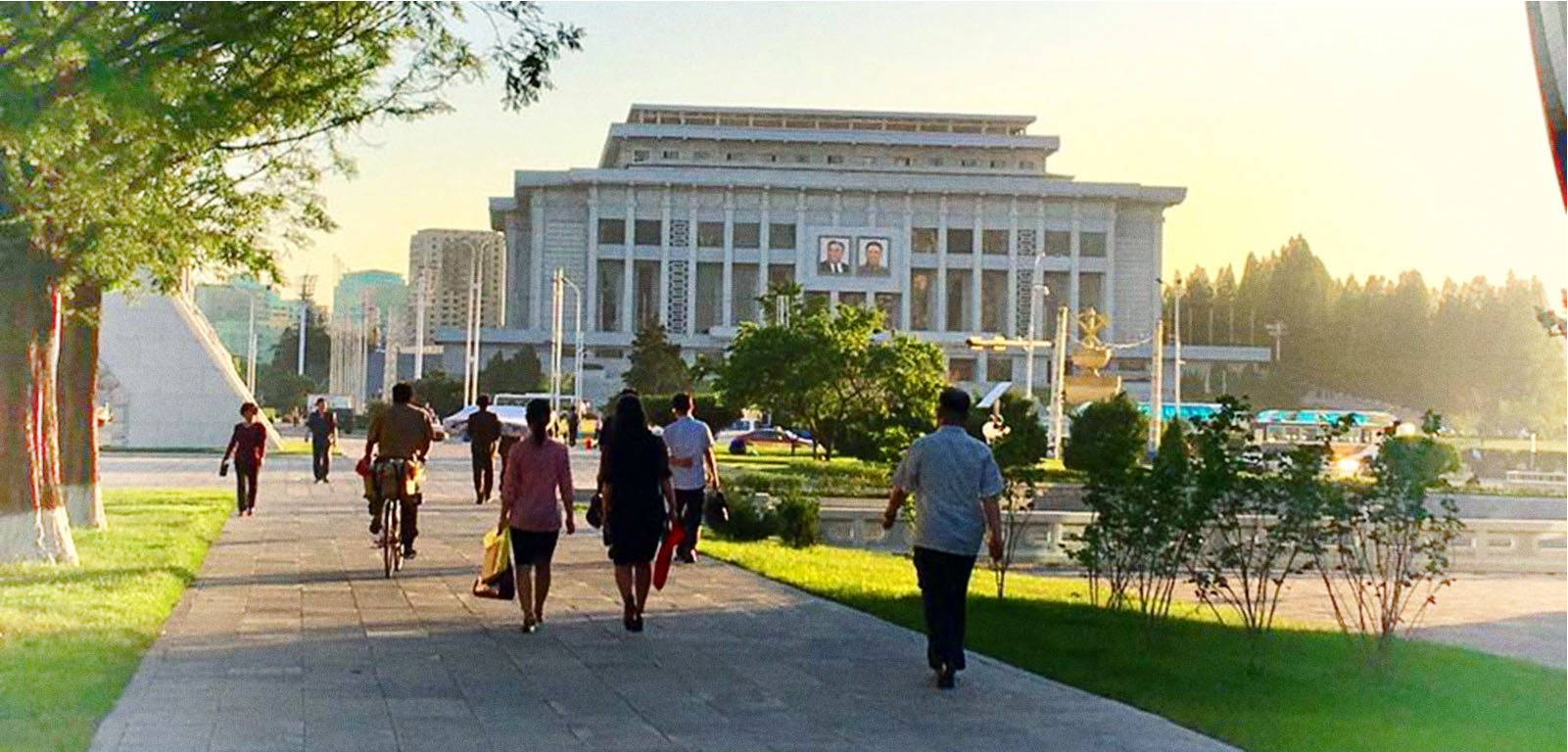 |
| During this trip, I also wanted to find a part of my childhood. I expected Pyongyang to have run-down apartment buildings, full of vines and broken walls, just like the Kim Lien area in Hanoi where I grew up. However, there was nothing of the sort. There are indeed a lot of apartments in Pyongyang, but all of them are new and in great shape, not vintage or mouldy like I expected. |
 |
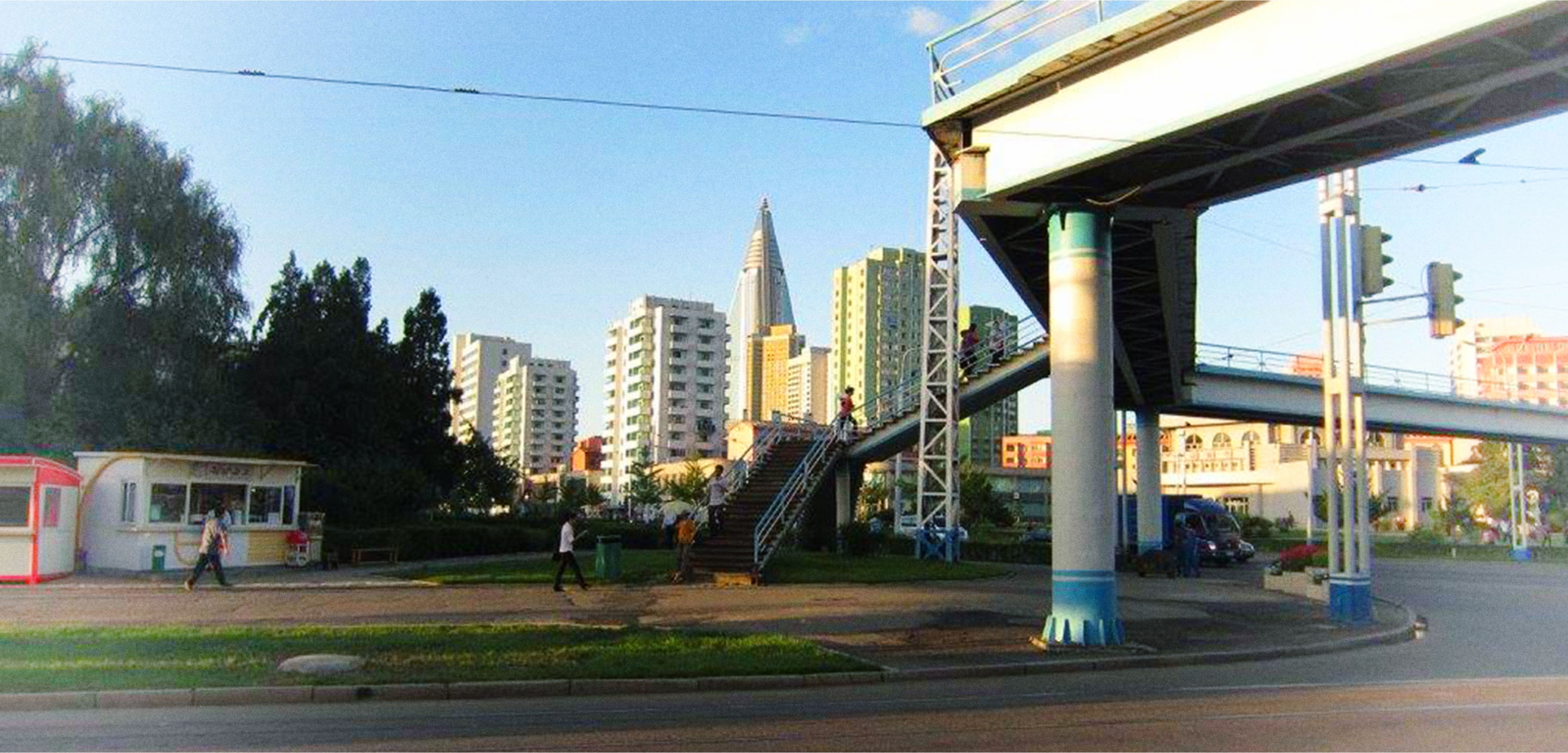 |
| According to the tourguide, the streets of Pyongyang remained deserted until two years ago, when economic development brought the rise of taxis and other forms of transportation (foreigners are still forbidden to ride taxis in the city). There are more vehicles on the street, but no honking was heard at all. The majority of North Koreans use public transport: the metro, the tram, and the bus. Lines of passengers waited for their ride in orderly lines, even at 10 PM. |
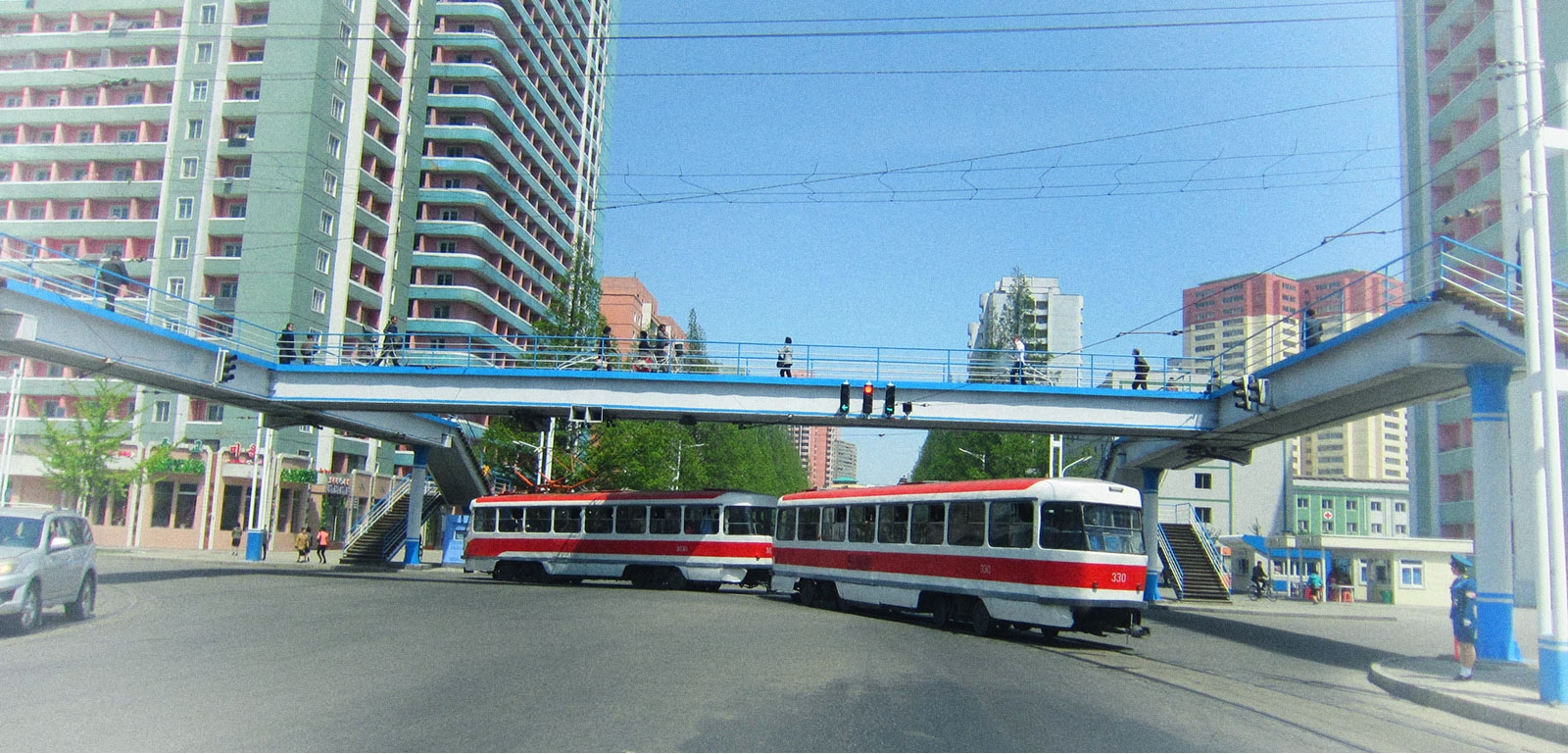 |
| North Korea lacks petrol, which explains why suburban citizens often travel by bikes or hydro cars—trucks with an ensuite water barrel. At least two people are required at all times on these hydro cars to make sure that the water barrel is always hot. |
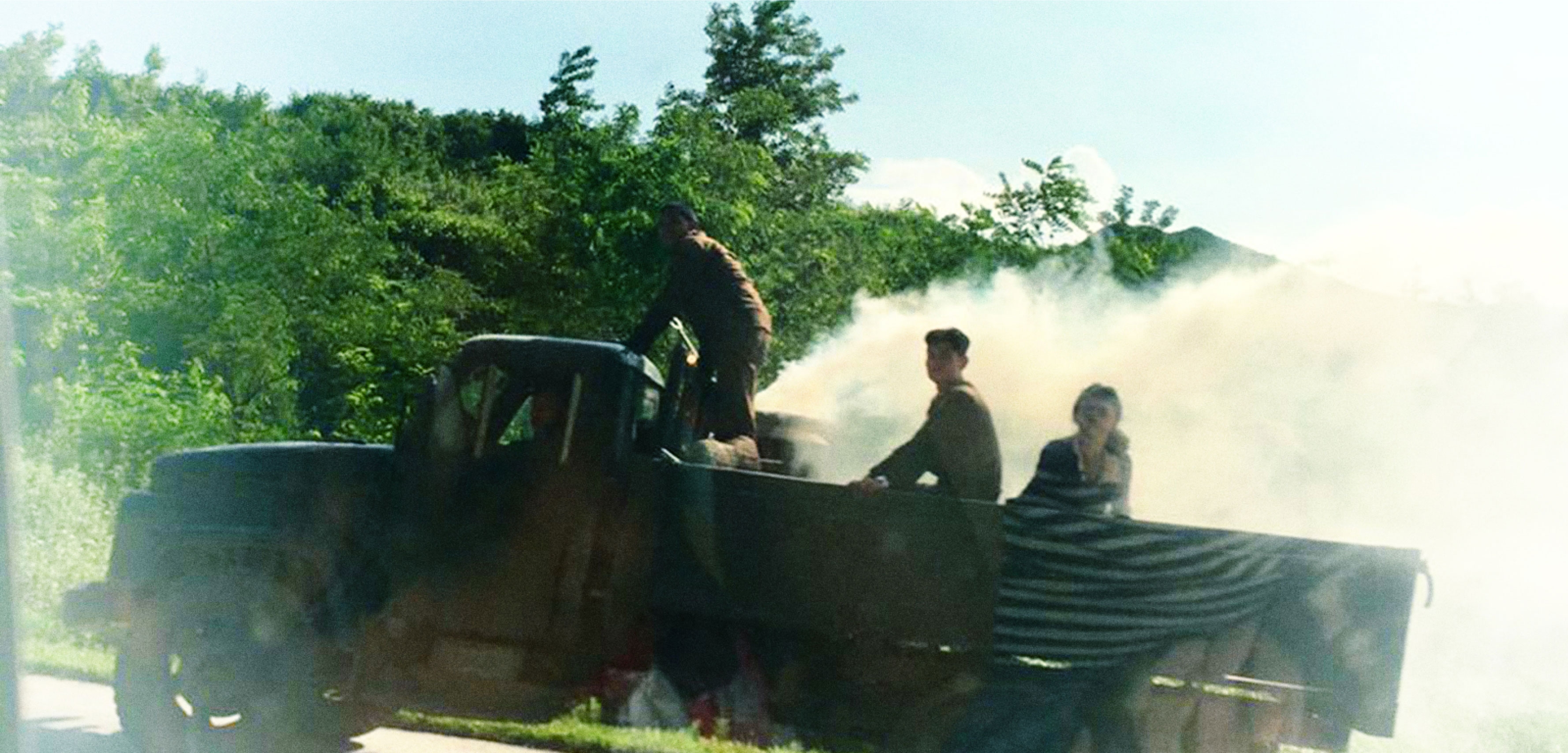 |
 |
| You can see many food and beverage kiosks in Pyongyang, which tend to fill up with customers during rush hours. Supermarkets for foreigners are open all day, while markets for civilians are only accessible between 4 PM and 6 PM during the harvest season and between 2.30 PM and 6 PM otherwise. In recent years, foreigners have been allowed to visit some civilian markets in Pyongyang. Taking photographs, however, is strictly forbidden. |
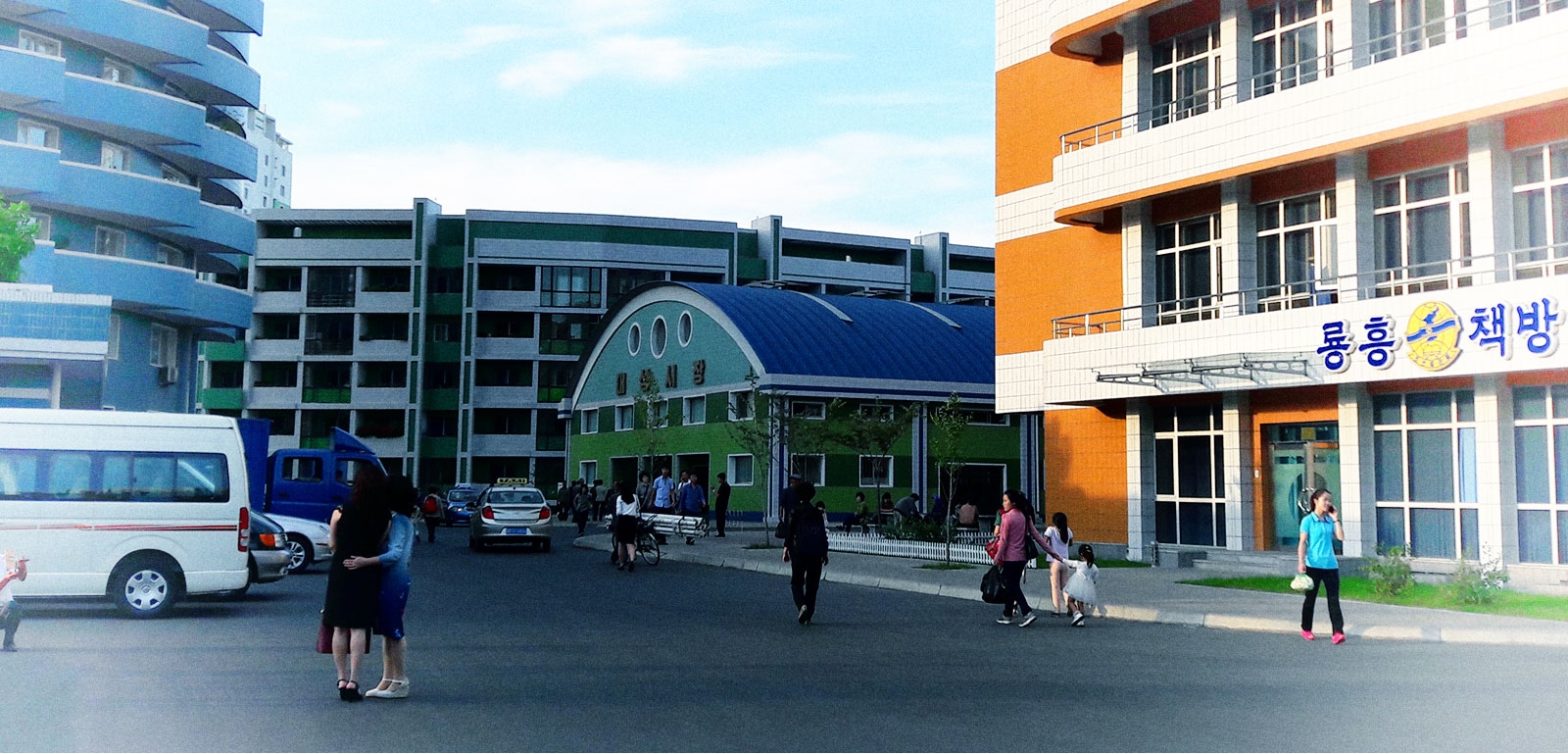 |
| The markets sell a variety of goods: seafood, instant noodles, confectionery, textile, and shoes. Many imported products are also available—which is a result of North Korea’s economic reform. The sellers of each product category wear specific uniforms. Most of them are friendly middle-aged women. In recent years, North Korean makeup products have received support from the government. Skincare products made from ginseng are quite popular, especially toners and serums. |
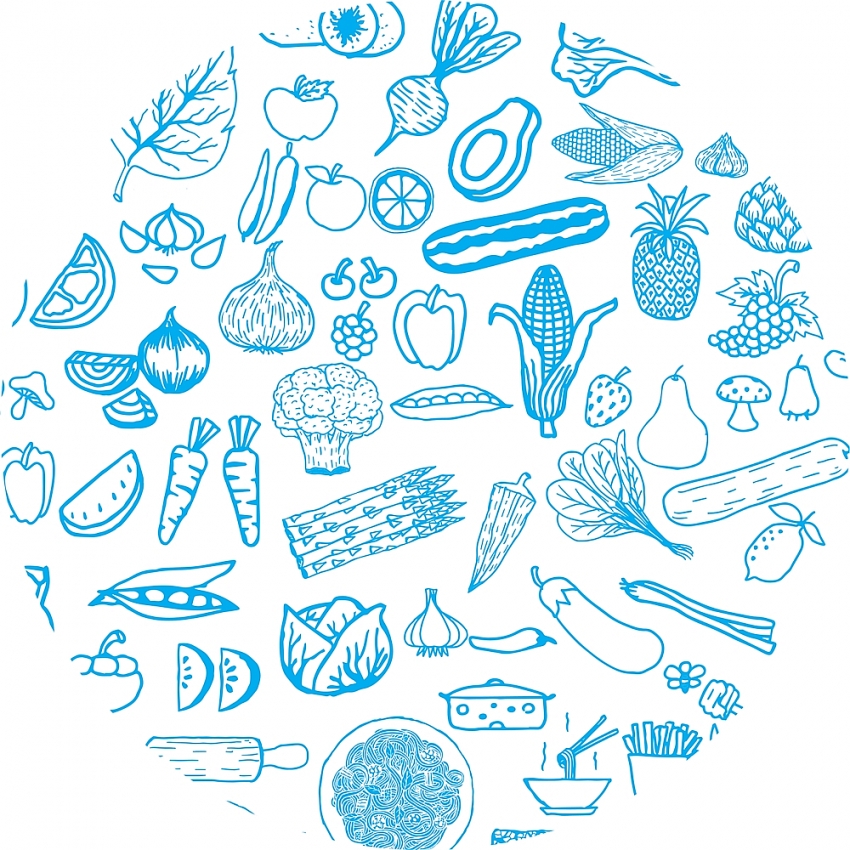 |
| Pyongyang has many restaurants without signs. Their interior is polished, the food is affordable and quite delicious. For entertainment, there are pianos and karaoke systems, as well as hostesses who can sing and dance beautifully. This is a specialty of North Korea—to blend dining with entertainment. There are similar restaurants in this concept in Hanoi and Ho Chi Minh City. |
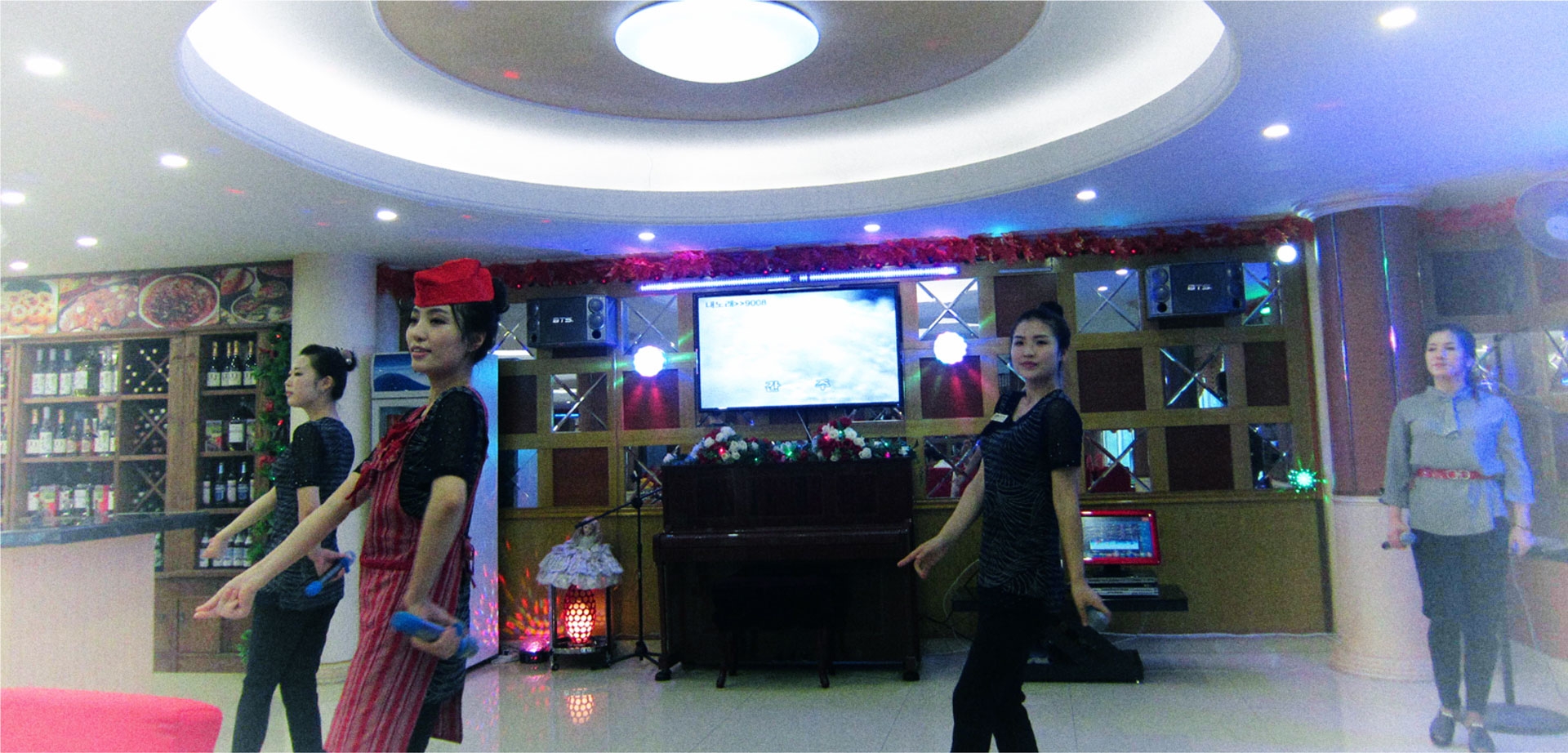 |
| A highlight of North Korean cuisine is cold noodles. The most famous restaurant for this dish is Ngoc Lieu Quan, which is only open during lunchtime and has no signboard. Lines of eager customers fill up the restaurant everyday. |
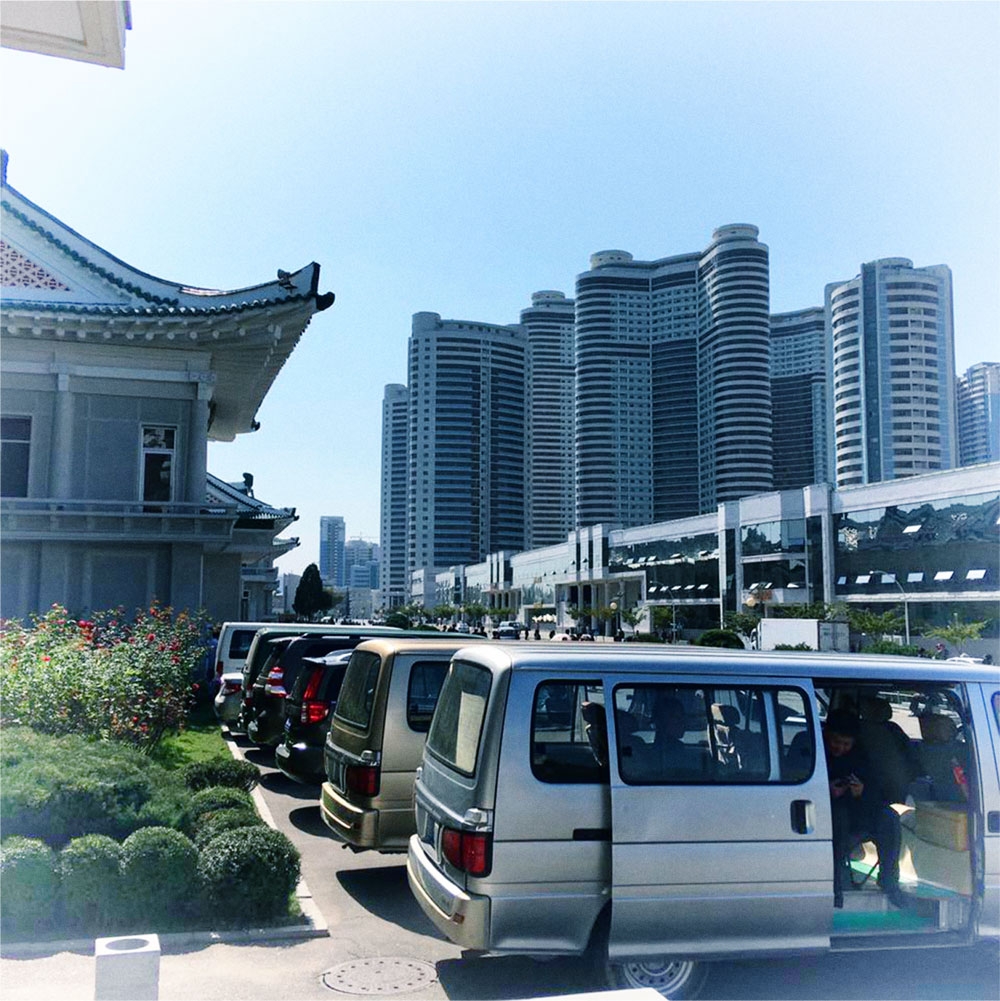 |
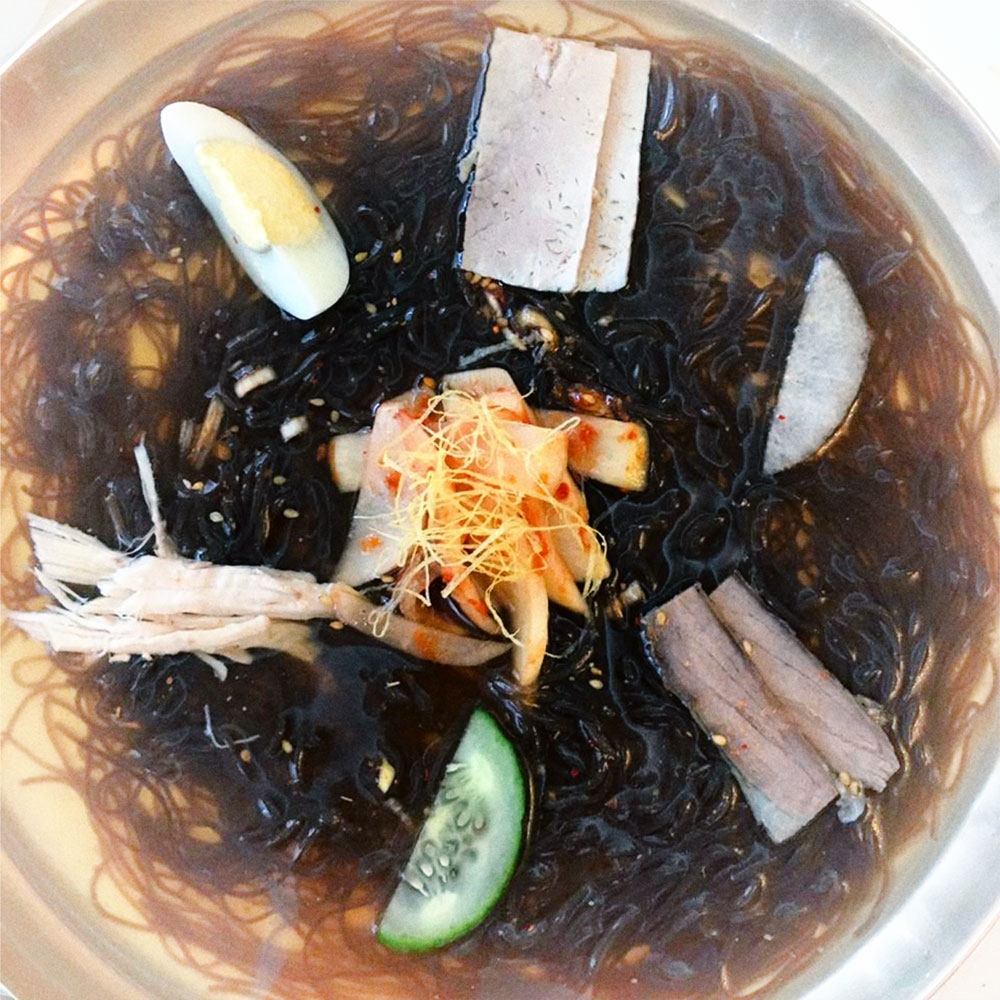 |
| North Koreans tend to be polite and cultured in their daily lives. Nobody wears pyjamas or slippers outdoors, all students wear white shirts and a red tie. It is noteworthy that tuition fees are subsidised by the government, including textbooks, uniforms, and stationery supplies. North Korea places great importance on education. All North Korean children can learn musical instruments, calligraphy, sports, and dance. Whatever they choose to learn, they do not have to pay anything, as all courses are subsidised by the government. Kim Il-sung University, the most respected tertiary school in North Korea, covers a 37-hectare area. The campus includes one main hall, 10 separate offices, 50 labs, a library, a museum, a publishing house, dormitories, and even a hospital. A new dorm for international students has been finished—40 overseas students are housed in a 12-storey building with a gym, swimming pool, sauna, stores, meeting rooms, and a dining hall. |
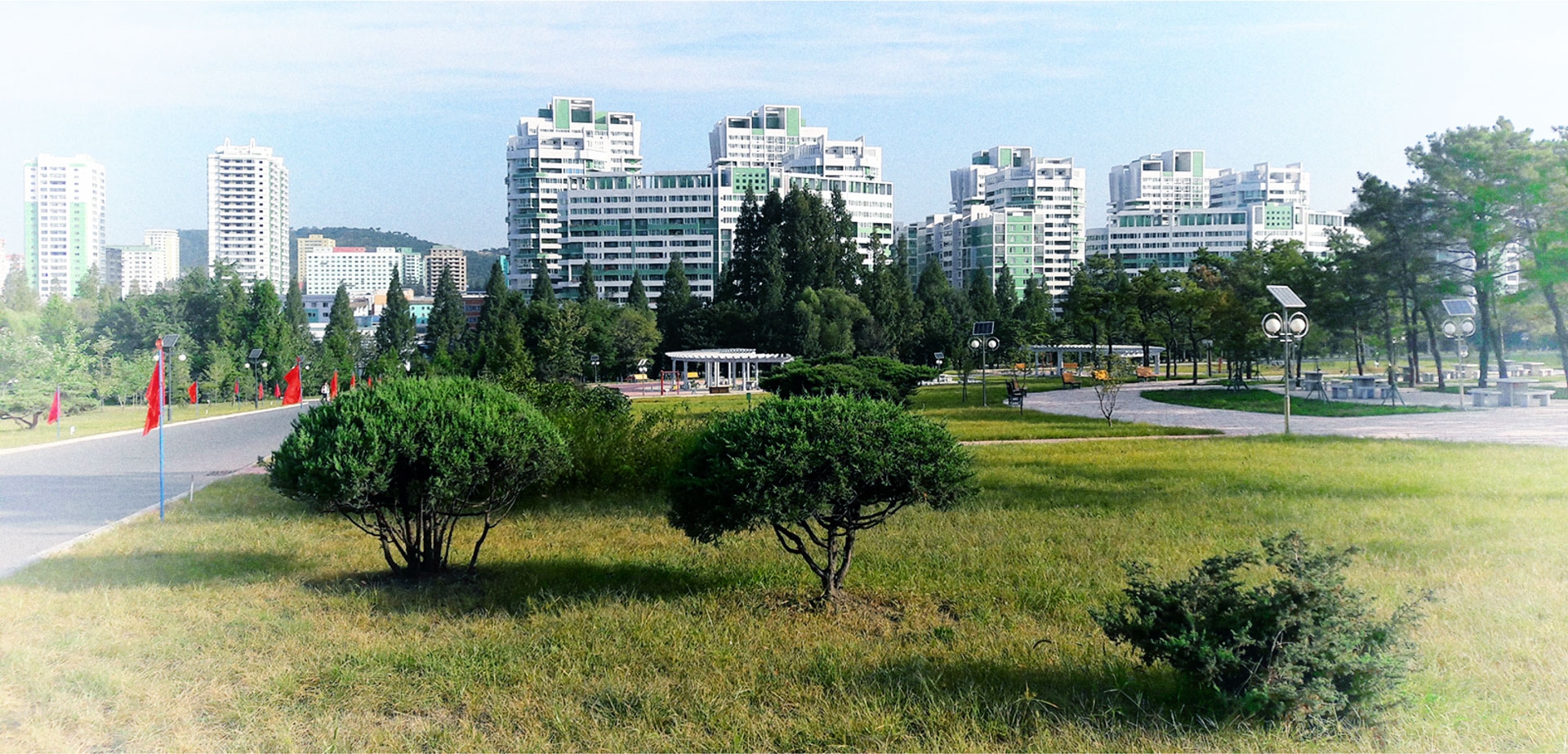 |
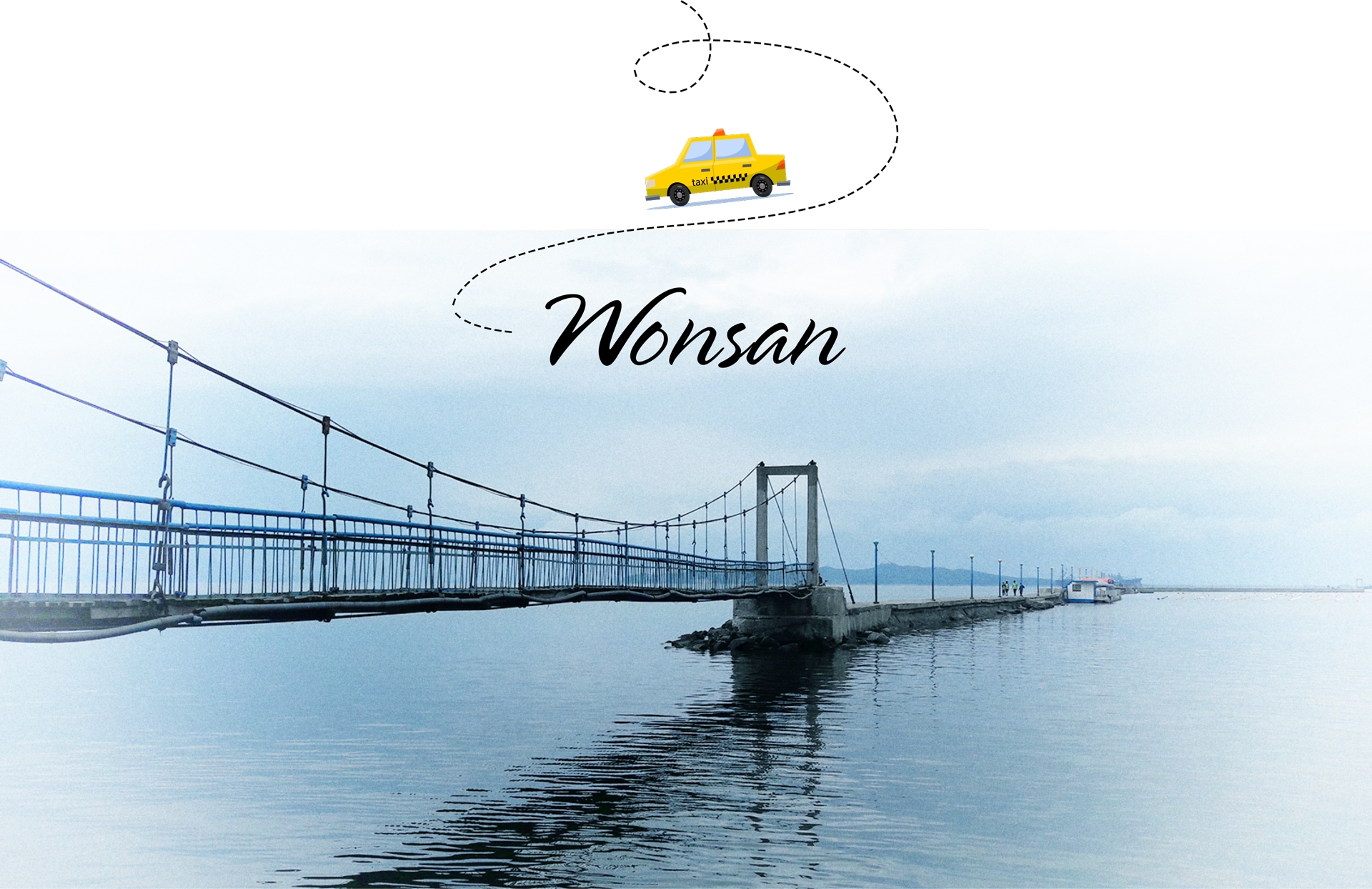 |
| In North Korea, travelling between different provinces requires a permit. At the border of every province there is a security booth, checking travellers’ permission to enter the area. All staff members of international organisations in North Korea must submit application forms at least two weeks beforehand. A North Korean tourguide will accompany these staff members. |
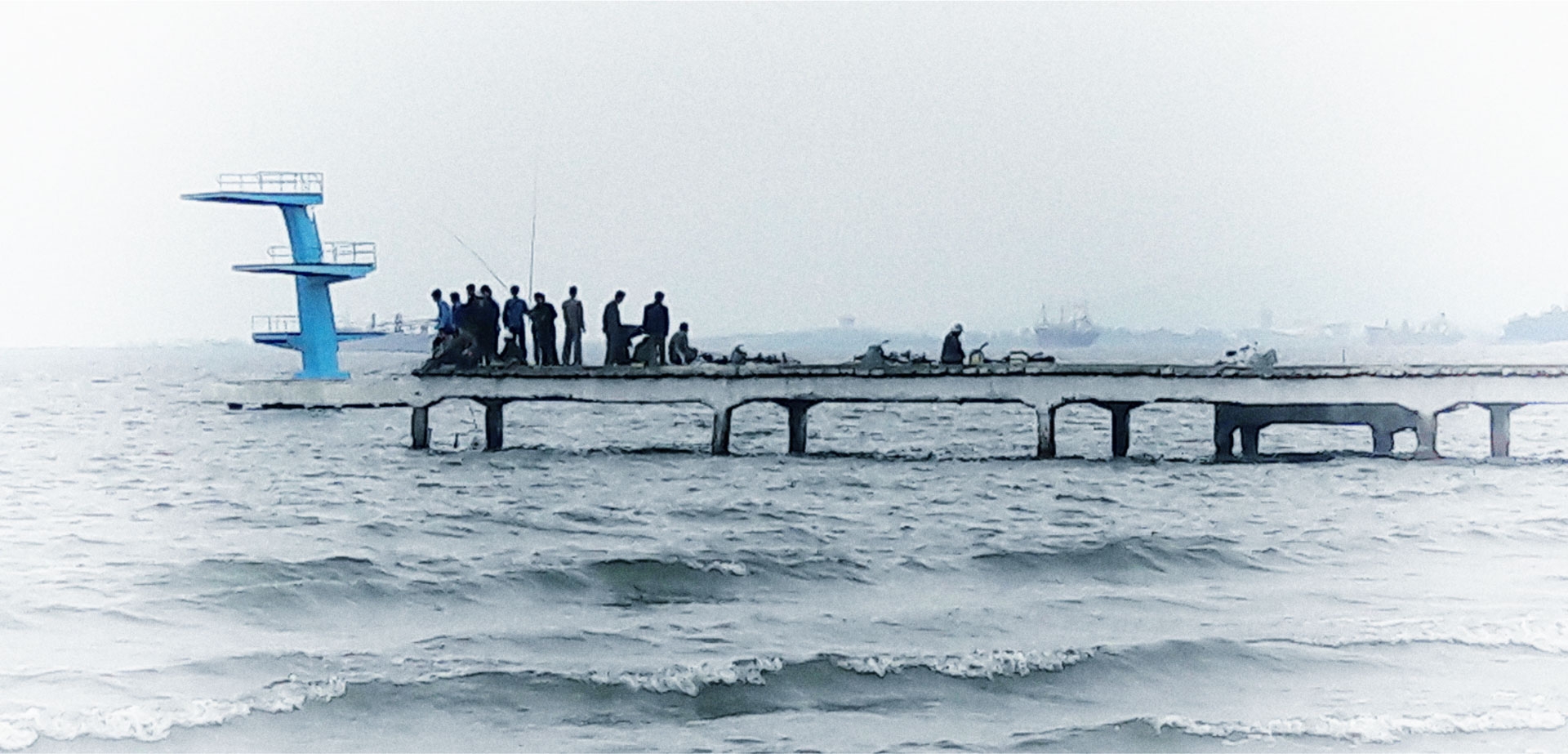 |
| On our way to Wonsan, we saw two foreign reporters at work. Evidently, they were accompanied by a North Korean translator and a tourguide. The seaside city of Wonsan is 200 kilometres away from Pyongyang. On my way there, I could not help admiring how orderly the North Koreans are—everything from the biggest street to the smallest alley was clean and organised, even if the houses were decades old. Wonsan Beach is divided into two sections—one for locals and one for foreigners. We could see locals enjoying their time fishing beneath the swallows flying in the sky. |
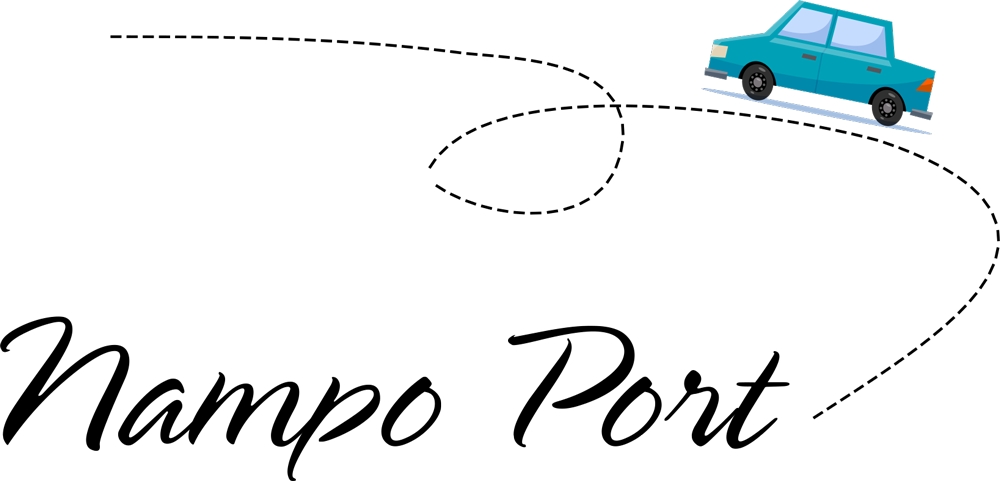 |
| 50 kilometres away from Pyongyang is Nampo Port, where North Korea receives aid from other countries. There is a dam separating fresh from saline water. |
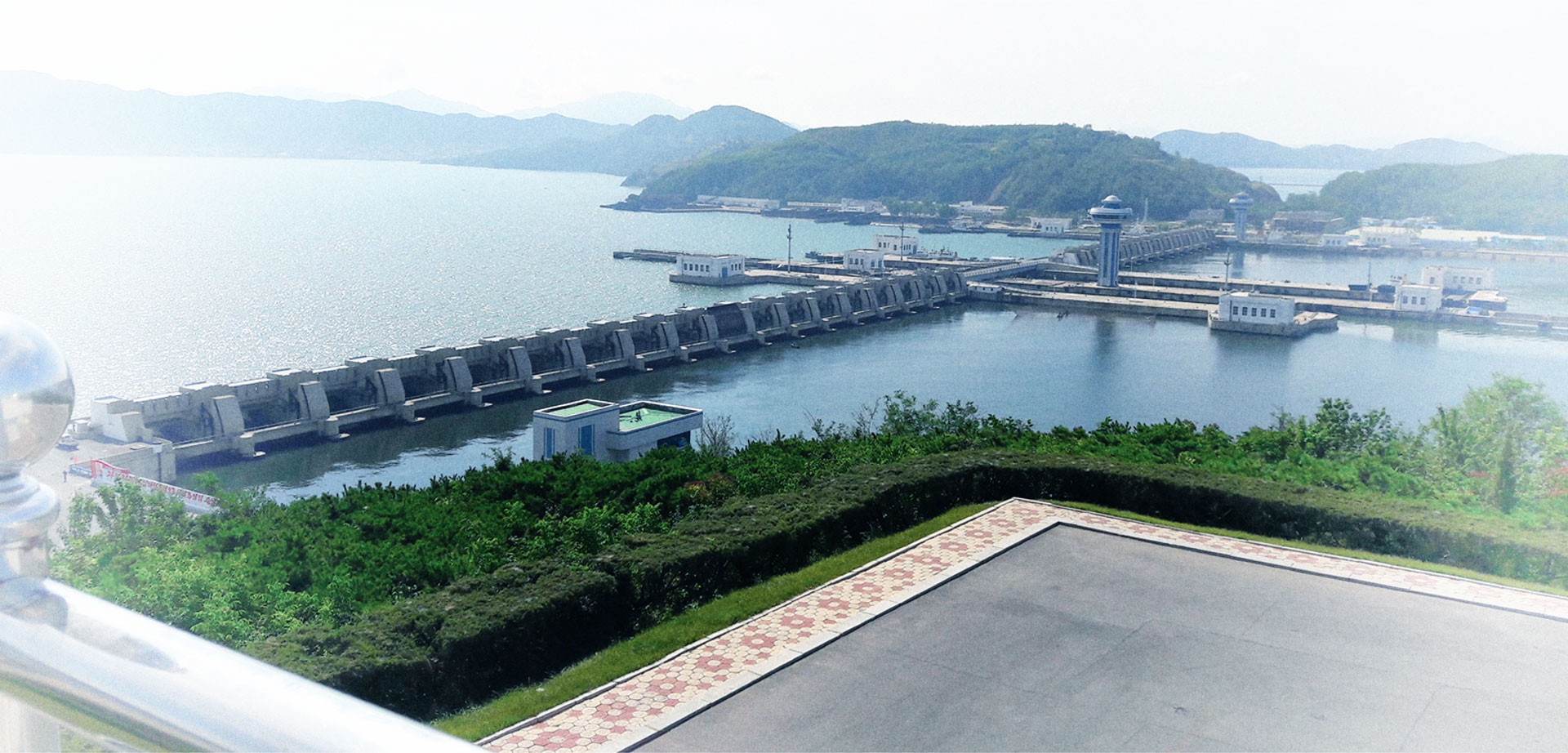 |
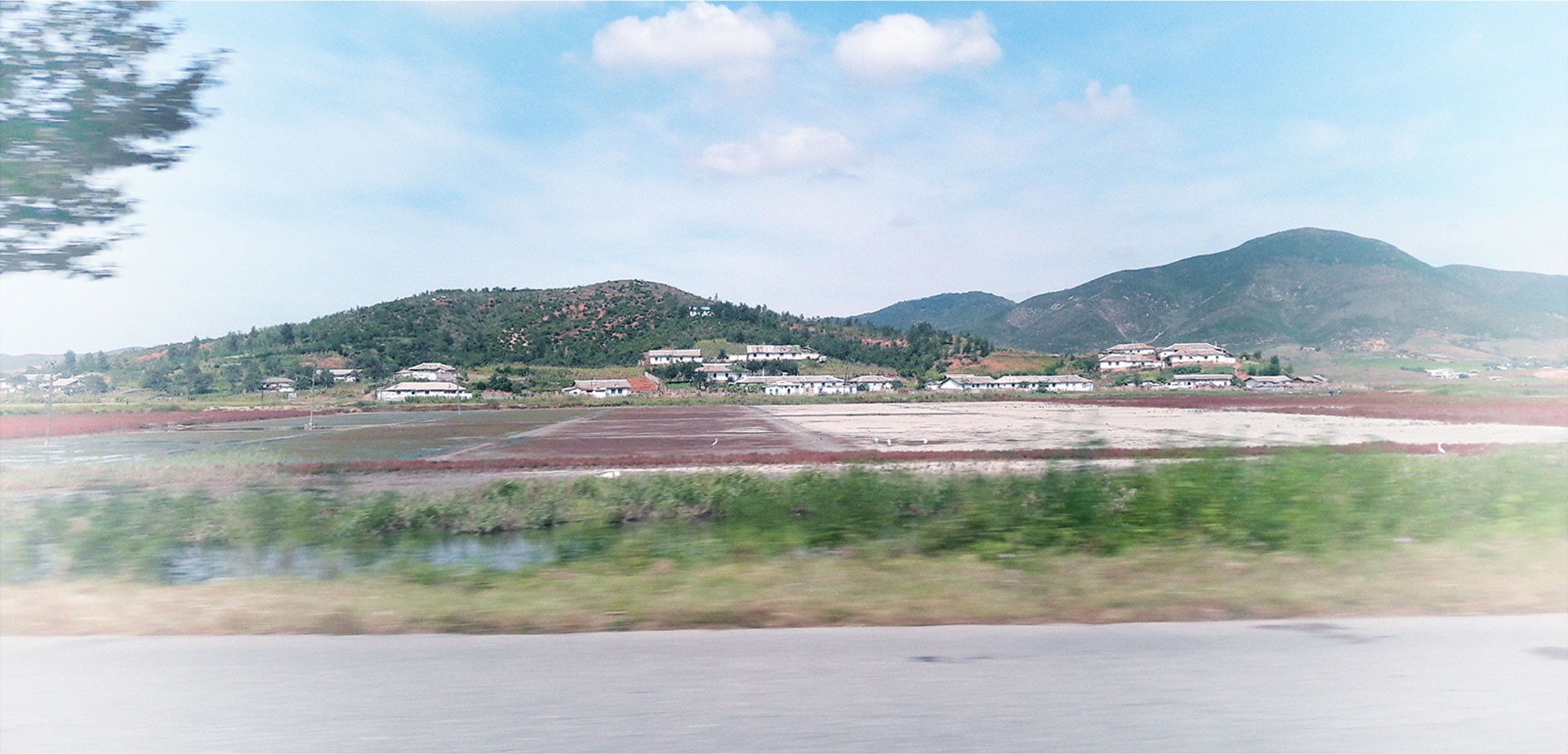 |
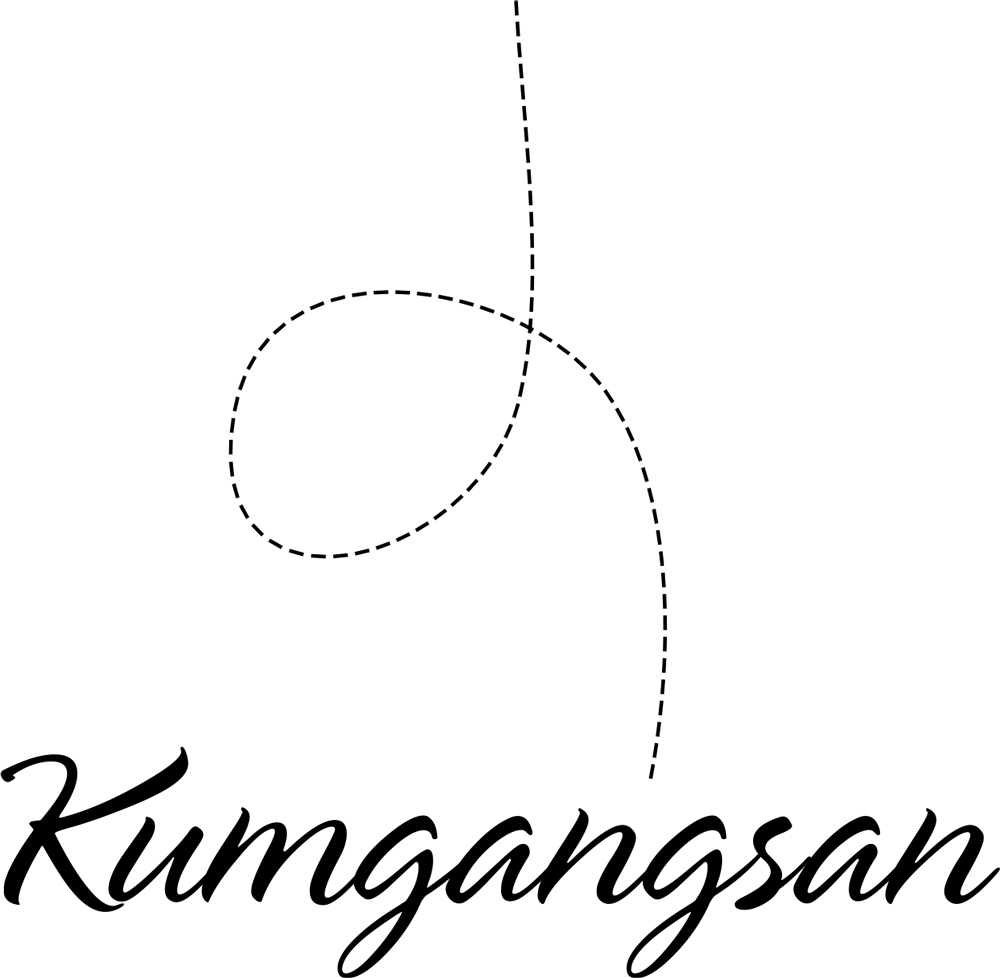 |
| Kumgangsan, located along the border with South Korea, is 1,638 metres high with beautiful scenery. Kumgangsan used to be a posh resort town, a favourite travelling spot for international workers who enjoy the clean air and lush landscape. |
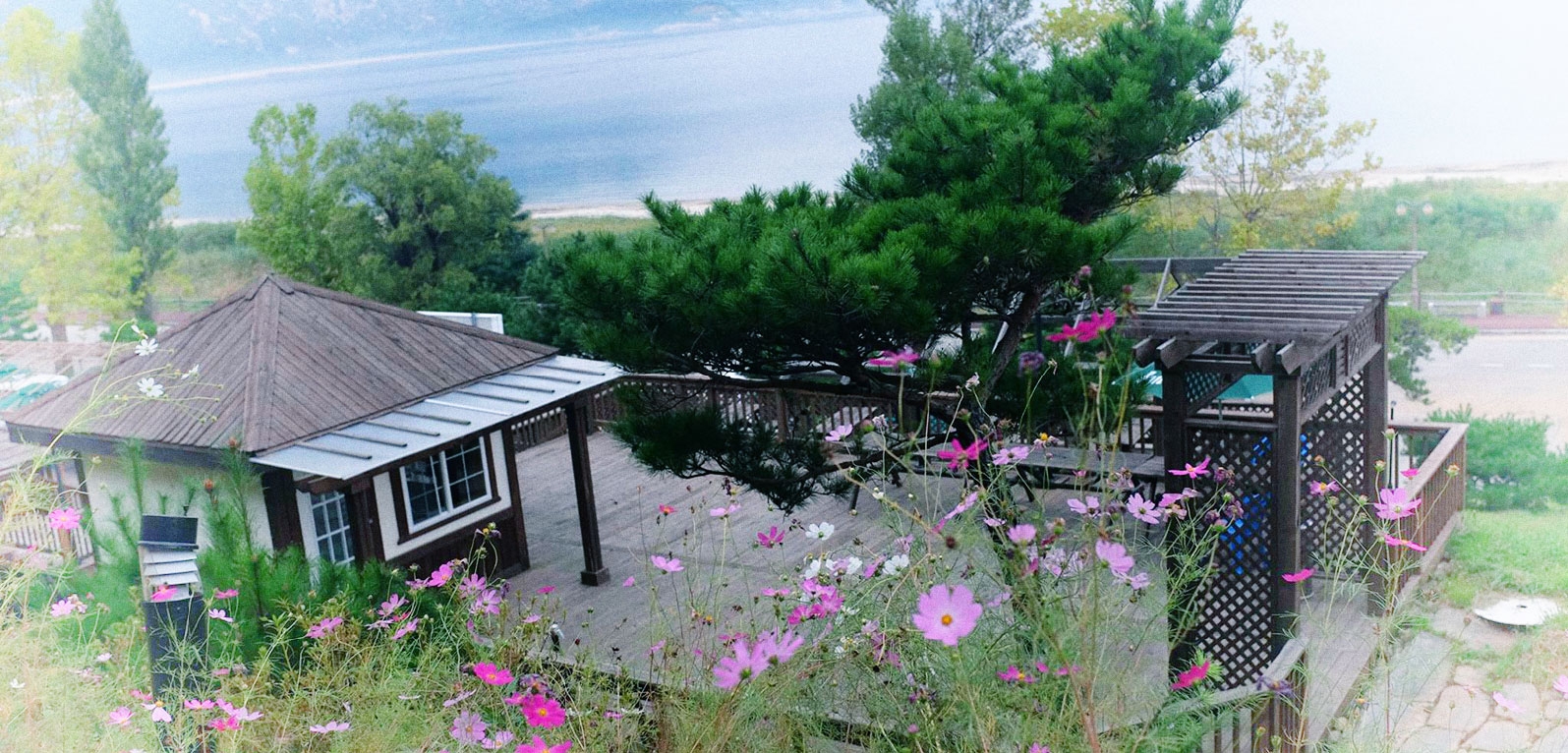 |
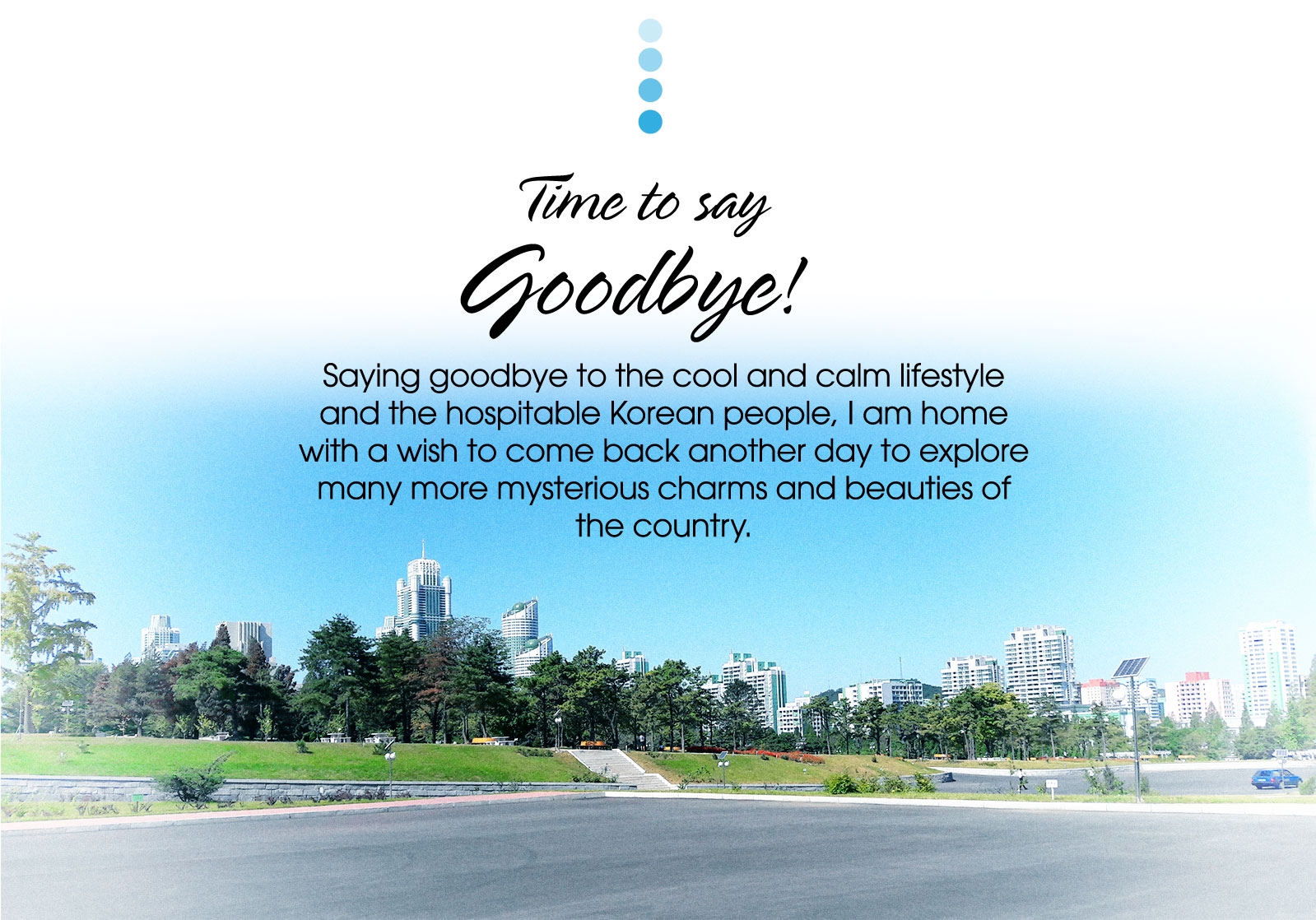 |